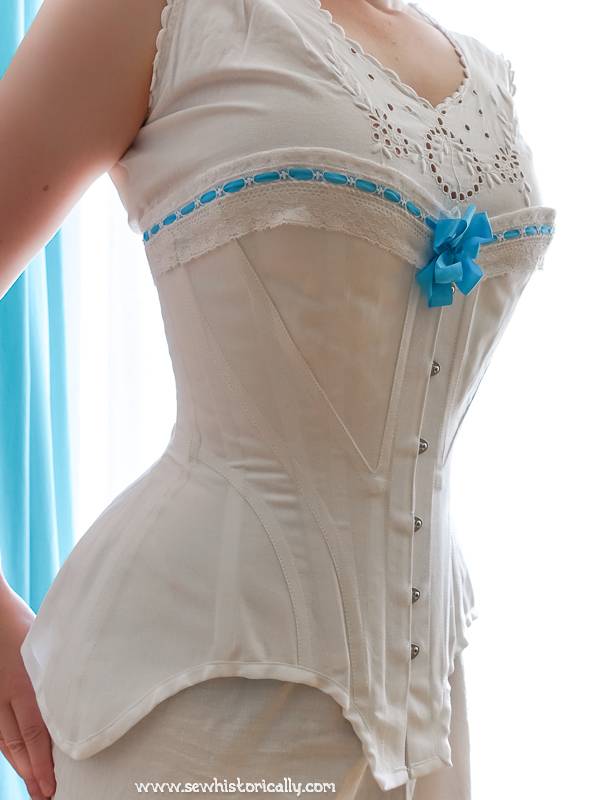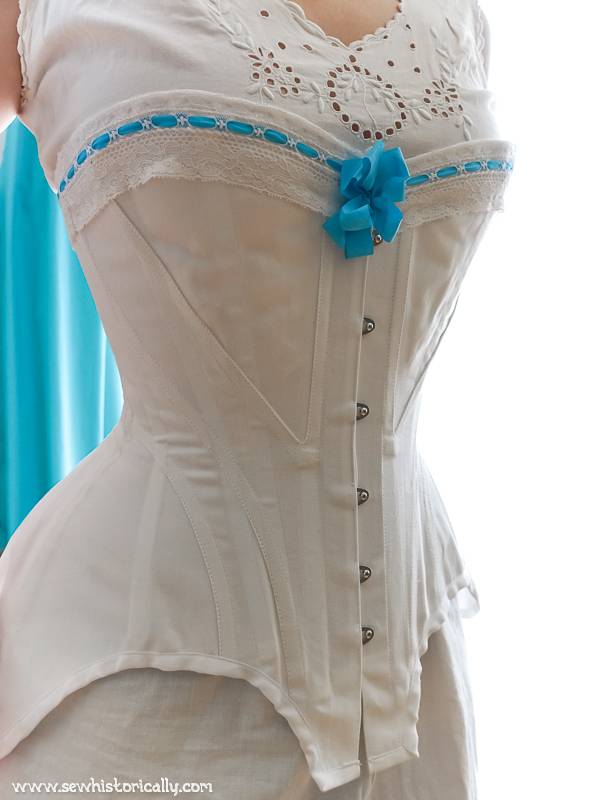‘The “W. B. Erect Form” corset gives a long, low and full effect from shoulder to bust. It is the only correct model for the new straight-front styles in costumes. It is a health corset. It is a surpassingly beautiful corset.’ (W.B. Erect Form Corset Ad, 1900)
Even though I often make historical corsets, particularly Edwardian corsets, this is the first time I used coutil – the typical corset fabric of today – and spoiler: I don’t like it! 😉
Related: Edwardian S-Bend Silk Corset
Antique 1900s Straight-Front Corset Inspirations
‘This long hip “Erect Form” is the very latest corset! The extra pieces at the side cover and fit the hip with perfect smoothness, rounding off the lines into exquisite curves.’ (W. B. Erect Form Corsets Ad) ‘The New “Long Hip” insures the greatly prized dip effect to the figure and imparts graceful lines and curves to the hips. It improves the fit and set of skirt and gown in wonderful degree.’ (W.B. Erect Form Corset Ad, 1902)
In the Edwardian era this type of corset was called erect form or straight front corset, while today it’s usually known as S-curve or S-bend corset. As usual, my corset is inspired by antique 1900s corsets, particularly from the early and mid-Edwardian era, like this 1902 W. B. erect form corset, these 1904 Acme & Kabo corsets, this 1905 La Spirite corset, these 1907 Acme corsets, this W. B. corset, this 1907 La Spirite corset, this antique Edwardian corset at the Met and this antique Edwardian coutil corset. And I pinned all my inspirations for my Edwardian coutil corset to my pinterest board “1900s Lingerie”.
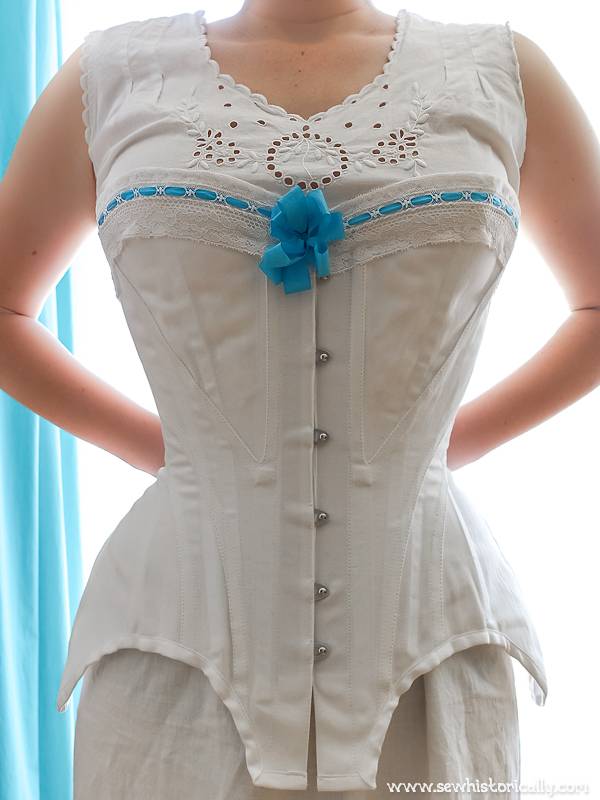
My First Coutil Corset And I Don’t Like It!
As I’ve already mentioned, it’s my first coutil corset and I don’t like it! You can buy very different types of cotton coutil corset fabrics: I chose one with the highest fabric weight I could find meaning that the coutil is very stiff and heavy. Even after washing it didn’t soften up. Next time I should probably use a different type of coutil corset fabric with a lower fabric weight.
Related: Edwardian Health Corset – “Good Sense” Corset Waist
‘Erect Form Style made of extra heavy French Coutil’ (W.B. Erect Form Corset Ad, 1900).
By the way, in the Edwardian era corsets were made of all kinds of different cotton, linen and silk fabrics: like cotton twill, cotton sateen, cotton corset jean, cotton batiste, cotton netting, silk broché and linen broché. But today cotton coutil is the typical fabric for corsets. I’m probably one of the few exceptions because I don’t like coutil as corset fabric! 😉 I find it stiff and uncomfortable and heavy and hot. And because the fabric is so thick the coutil corset rather adds to my waist measurement than reduces my waist size! I definitely prefer cotton twill (also stiff but more comfortable), cotton batiste and cotton aida cloth (both are perfect for summer corsets) to coutil anytime!
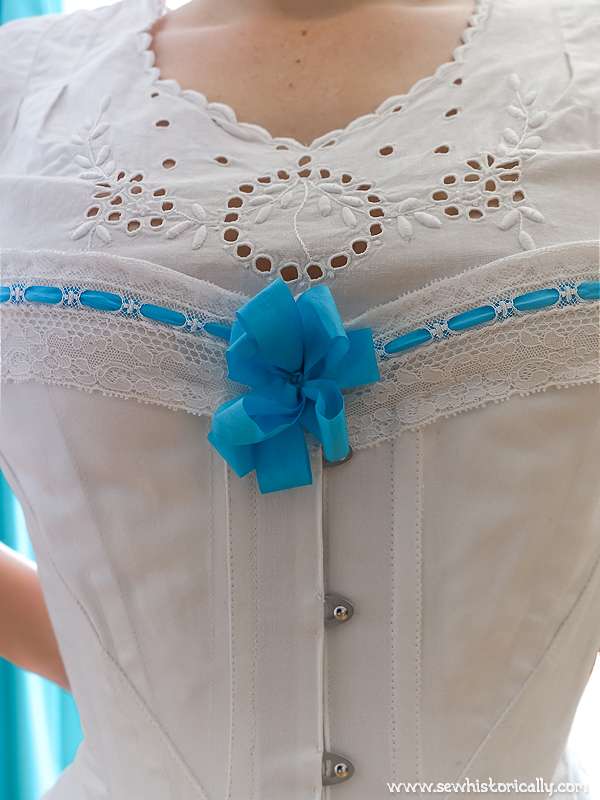
Heavily Boned Corset
The corset is heavily boned with an extra wide stainless steel busk and flat steel boning at the front, and rigid synthetic whalebone boning at the sides and back. I used stiffer synthetic whalebone boning than I usually use for Edwardian corsets. And I think that’s also what made the corset so uncomfortable for me because I don’t have a conical ribcage: I’m naturally curvy but I have a wide and rigid ribcage. Stiff and heavily boned corsets don’t compress my ribs, they are just uncomfortable or even painful to wear with my body shape. For other body shapes, heavily boned coutil corsets may work perfectly but with my wide and rigid ribcage I prefer lightly boned corsets: I can lace them tighter and they are way more comfortable for me to wear! 😀
Mechlin & Valenciennes Lace Trim & Dyed Silk Ribbons
In the 1900s, corsets were usually trimmed with cotton lace at the top: fine valenciennes lace for elegant corsets and eyelet lace for sturdy everyday corsets. To trim the top of my Edwardian coutil corset, I used three different cotton mechlin and valenciennes lace trims. Like it was done in the 1900s, I sewed them together with overhand stitches by hand. And then stitched them to the top of the corset also by hand.
Then I threaded silk ribbon that I had dyed turquoise through the beading lace. Some antique 1900s corsets had silk ribbon rosettes at the front of the corset not only as decoration but also to keep the corset busk from showing through the dress. Therefore I also added a turquoise silk ribbon rosette.
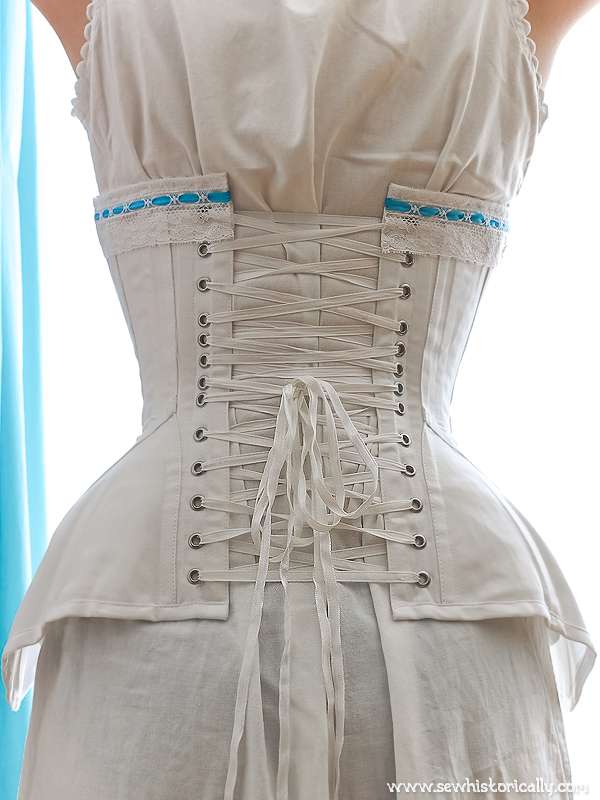
Edwardian Coutil Corset – Sewing Details
Edwardian corsets were usually single layer corsets constructed with lapped seams. My Edwardian coutil corset is also a singe layer corset. All seams are flat felled seams with interior cotton twill tape boning channels. The top and bottom of the corset is also bound with cotton twill tape.
The corset is laced with flat rayon satin lacing cords. By the way, the grommets are closer together at the waist: Some antique Edwardian corsets had this feature so that the corset could be laced tighter. But this didn’t work well with my rigid ribcage.
Here I’m wearing my coutil corset without padding and garters. But I’m currently sewing an Edwardian hip pad. And I’m also making detachable garters.
By the way, I’m wearing my Edwardian coutil corset over an antique Edwardian chemise. Isn’t it beautiful? 😀
